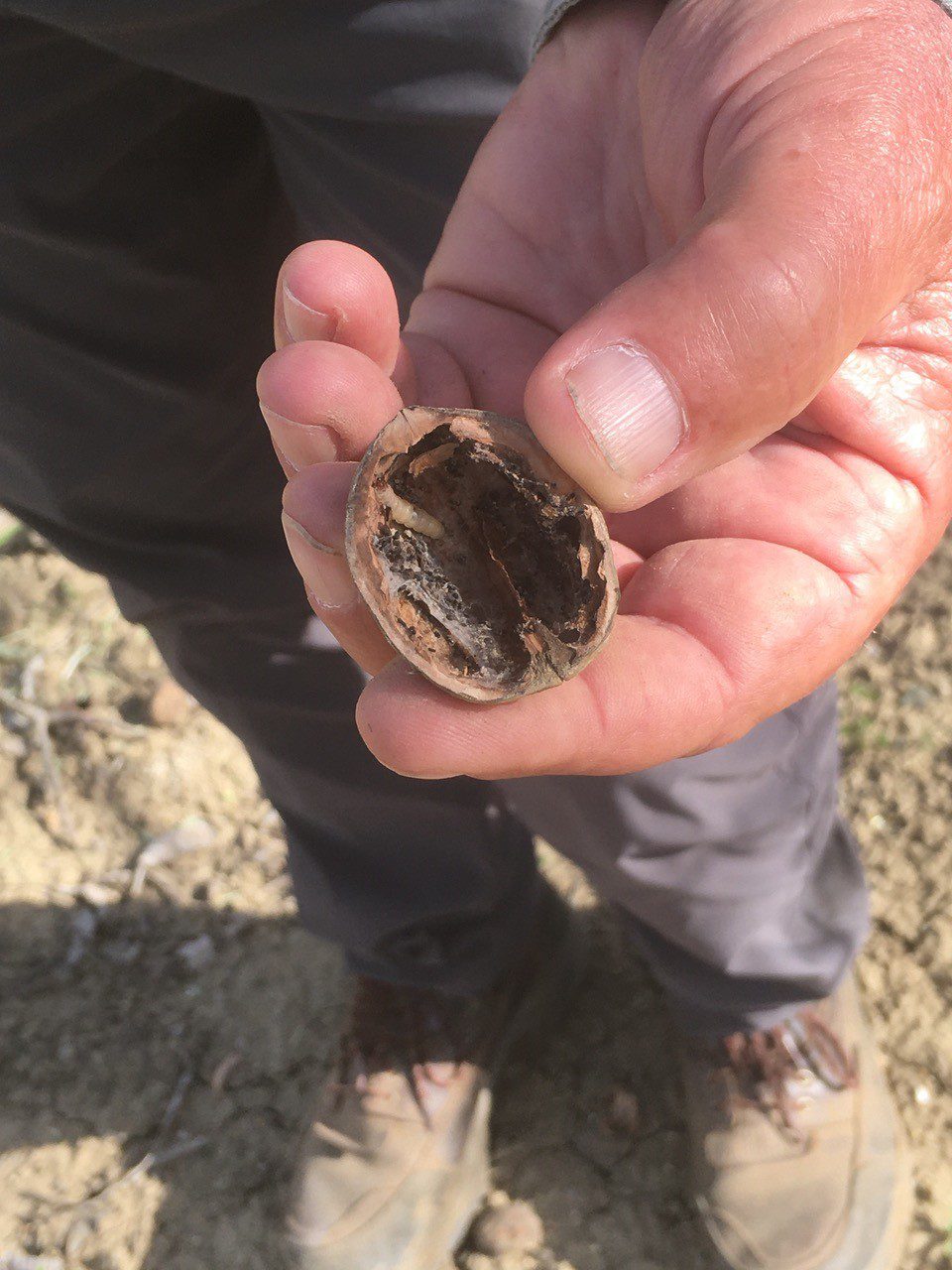
Codling moth-infested, blighted or sunburned walnuts are an open invitation to navel orangeworm. Adding another generation annually increases potential for crop damage.
At the 2022 California Walnut Conference, UCCE Integrated Pest Management Advisor Jhalendra Rijal said potential increase in navel orangeworm populations could also pose problems for growers due to drier weather and higher temperatures.
The presence of mummy nuts in the orchard helps build that first generation of NOW, Rijal said, and the second and third generations target the codling moth damaged and blighted walnuts. Generations three for early varieties like Vina and Serr, and four hit the split nuts.
“This is an opportunistic pest with multiple generations, it is mobile and adapted to environmental conditions. It is highly temperature-dependent,” Rijal said.
Host abundance is key to NOW success and walnut growers and farm managers need to think about fundamental ways to reduce NOW populations. Monitoring helps in making decisions on what management options to use and when. Orchard proximity to other tree nut orchards matters, Rijal noted, but it is not the entire story. Paying attention to what is happening in surrounding orchards can help with management decisions.
Navel orangeworm growth and development are proportional to ambient temperatures. Rijal said Now physiological begins at 55 degrees F. As statewide average temperatures rise, more NOW activity is expected, including possibility of a fifth generation.
When it comes to drought conditions, that adds to tree stress which make trees attractive to insects, especially mites and wood borders such as flatheaded border, walnut twig beetles, etc.. Rijal said there are complex interactions among pest species that can impact orchard sanitation and make it more difficult. Drier fall and winter seasons make sanitation harder and increase the rate of NOW survival.
In addition to higher survival rates, NOW could expand their geographic range. Desynchronization of insect pests and natural enemies could also be expected.
Rijal said that in the Central Valley, climate models predict warmer temperatures that could shorten the life cycle of the first generation by 6 weeks in the future. In the Sacramento Valley, that shortens the days from 154 to 180 days from 193. Comparing the degree-days required in almonds and walnuts, a fifth generation of NOW is expected in three Central Valley counties by 2040 and by 2100, it is likely 17 counties will be affected. In pistachio production, by 2040, seven Central Valley counties could experience a fifth generation of NOW. This is due to less degree-days for navel orangeworm to complete on generation in pistachios compared to almonds or walnuts.
“There are broad implications for managing this pest in the future,” Rijal said.

Cecilia Parsons
Cecilia Parsons has lived in the Central Valley community of Ducor since 1976, covering agriculture for numerous agricultural publications over the years. She has found and nurtured many wonderful and helpful contacts in the ag community, including the UCCE advisors, allowing for news coverage that focuses on the basics of food production.
She is always on the search for new ag topics that can help growers and processors in the San Joaquin Valley improve their bottom line.
In her free time, Cecilia rides her horse, Holly in ranch versatility shows and raises registered Shetland sheep which she exhibits at county and state fairs during the summer.















